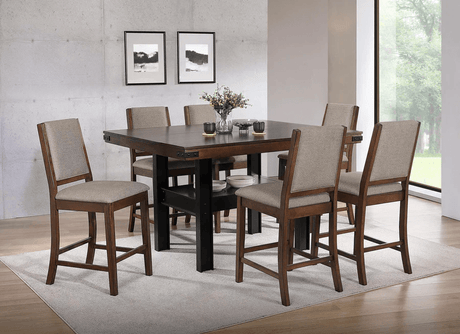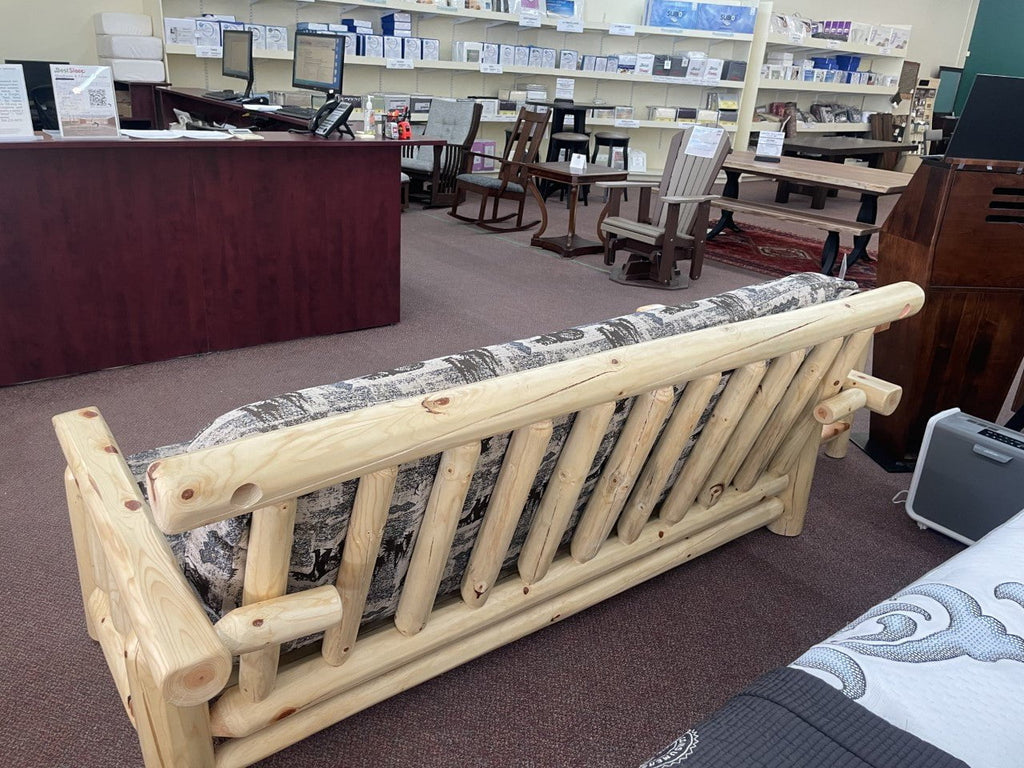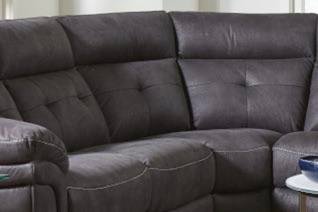As an Amazon Associate I earn from qualifying purchases.
Building Amish furniture is a rewarding experience. It blends craftsmanship with tradition.
Are you fascinated by the timeless beauty and durability of Amish furniture? Interested in learning how to create these masterpieces yourself? This guide on “How to Build Amish Furniture” will provide you with the essential knowledge and techniques. Discover the secrets behind the meticulous craftsmanship that defines Amish furniture.
This book is perfect for beginners and seasoned woodworkers alike. You’ll learn about the traditional tools, materials, and methods used by Amish artisans. Ready to dive into the world of Amish furniture making? Let’s explore the steps and skills needed to build your own stunning pieces that can be cherished for generations.
Introduction To Amish Furniture
Amish furniture is renowned for its quality, craftsmanship, and timeless appeal. Building Amish furniture is an art passed down through generations. This guide will provide you with the knowledge and skills needed to create your own pieces.
Origins And History
Amish furniture has deep roots in American history. The Amish, a group of traditionalist Christians, settled in America in the 18th century. They brought with them a strong tradition of woodworking.
The Amish people value simplicity and functionality. These principles are evident in their furniture. Each piece is hand-crafted with care and attention to detail. Their work reflects their beliefs and lifestyle.
Amish furniture gained popularity in the 1920s. It was during this period that people began to appreciate the quality and durability of handmade furniture. Today, Amish furniture is sought after for its unique style and superior craftsmanship.
Key Characteristics
Amish furniture is known for its distinctive features. These characteristics set it apart from mass-produced furniture.
- Quality Materials: Amish craftsmen use solid wood like oak, cherry, and maple. They avoid using particle board or veneers.
- Handcrafted: Every piece is made by hand. This ensures each item is unique and well-made.
- Durability: The furniture is built to last. It can be passed down through generations.
- Simple Design: The designs are simple yet elegant. They focus on function over form.
- Traditional Techniques: Amish craftsmen use time-honored methods. This includes dovetail joints and mortise-and-tenon construction.
These key characteristics make Amish furniture a valuable addition to any home. It combines beauty, practicality, and longevity.
Essential Tools And Materials
Building Amish furniture requires specific tools and materials. Using the right ones ensures quality and longevity. This section covers the essential tools and materials for creating beautiful Amish furniture.
Basic Hand Tools
To start building Amish furniture, you’ll need some basic hand tools. These tools are crucial for precision and craftsmanship. Here are some must-have tools:
- Saws: Hand saws, coping saws, and dovetail saws.
- Chisels: Various sizes for detailed woodwork.
- Planes: Bench planes and block planes for smoothing.
- Measuring Tools: Tape measures, rulers, and squares.
- Screwdrivers: Flathead and Phillips head.
- Mallet: For striking chisels and other tools.
Wood Types And Selection
Choosing the right wood is vital for building Amish furniture. Different woods have unique characteristics. Here are some popular choices:
| Wood Type | Characteristics |
|---|---|
| Oak | Strong, durable, and has a distinctive grain. |
| Cherry | Rich color, smooth texture, and ages well. |
| Maple | Hard, dense, and fine-grained. |
| Walnut | Dark color, straight grain, and easy to work with. |
Consider the wood’s grain, texture, and durability. These factors impact the final product’s appearance and strength. Select wood that fits your project and skill level. Happy building!
Workshop Setup
Discover the secrets of crafting beautiful Amish furniture with our comprehensive guide. This book offers step-by-step instructions for setting up your workshop. Ideal for both beginners and seasoned woodworkers.
Setting up your workshop is crucial for building Amish furniture. A well-organized space boosts efficiency and safety. This section covers how to create a functional workspace and essential safety tips.Creating A Functional Space
A functional workshop starts with good organization. Use shelves and cabinets to store tools. Keep frequently used items within reach. Arrange your workspace to minimize movement. This saves time and energy. Lighting is important too. Ensure your workshop has good lighting. Natural light is best. If not, use bright LED lights. Proper lighting reduces eye strain and improves accuracy. Ventilation is another key factor. Your workshop needs fresh air. Install a fan or ventilation system. This helps remove dust and fumes. Good airflow keeps you healthy and comfortable.Safety Tips And Practices
Safety in the workshop is vital. Always wear safety gear. This includes gloves, goggles, and a dust mask. Protect your eyes, hands, and lungs from harm. Keep your workspace clean. A cluttered area can cause accidents. Sweep the floor regularly. Wipe down surfaces to remove dust. Organize tools after use. Use tools correctly. Read the manual before using new equipment. Follow guidelines for safe operation. Never rush your work. Take your time to avoid mistakes and injuries. Maintain your tools. Sharp tools work better and are safer. Dull tools can slip and cause injury. Regularly inspect and sharpen your tools. Replace broken or worn-out parts. By following these tips, you create a safe and efficient workshop. Building Amish furniture becomes a satisfying and rewarding experience. “`Joinery Techniques
Building Amish furniture requires knowing various joinery techniques. These methods ensure durability and strength. Let’s explore two key joinery techniques.
Mortise And Tenon
The mortise and tenon joinery is strong. It has stood the test of time. This technique involves two parts. The mortise is a hole cut into one piece of wood. The tenon is a tongue that fits into the mortise. When joined, they create a tight fit. This joint is often glued or pinned. It is perfect for tables and chairs. It ensures stability and longevity.
Dovetail Joints
Dovetail joints are common in drawer construction. They look like a series of pins and tails. These interlock to form a strong bond. The dovetail joint is known for its resistance to being pulled apart. This makes it ideal for boxes and drawers. The precision of dovetail joints is crucial. They add both strength and beauty to furniture.
Step-by-step Project Plans
Creating your own Amish furniture can be rewarding. This guide offers step-by-step project plans. Follow each step carefully to ensure a smooth woodworking experience. Whether you’re a beginner or have some woodworking skills, these plans will help you create beautiful and functional pieces.
Simple Stool
The simple stool is a great starting project. Gather your materials: wood, screws, and glue. Begin by cutting your wood to the required dimensions. Assemble the legs first. Make sure they are even and secure. Attach the seat to the legs using screws and glue. Sand down any rough edges for a smooth finish. Apply your preferred stain or paint to complete the stool. This project enhances your basic woodworking skills.
Classic Rocking Chair
The classic rocking chair requires more precision. Start with selecting high-quality wood. Cut the wood into the specified pieces. Begin by assembling the frame. Ensure all joints are tight and secure. Attach the backrest and armrests next. These need to be sturdy for comfort. Finally, attach the rockers to the base of the chair. Sand the entire chair for a smooth surface. Finish with a stain or varnish to protect the wood. This project teaches advanced joinery techniques and enhances your craftsmanship.

Credit: www.amishoutletstore.com
Finishing Touches
The final step in creating beautiful Amish furniture is the finishing touches. This stage ensures your piece is smooth, protected, and visually appealing. It requires patience and attention to detail. Here, we break it down into two main parts: sanding and smoothing, and staining and sealing.
Sanding And Smoothing
Sanding and smoothing your furniture piece is crucial. Start with coarse sandpaper to remove rough spots. Work your way to finer grits. This process will make the wood surface even and ready for staining.
Use a sanding block or an electric sander for flat surfaces. Be sure to sand with the wood grain. This prevents scratches and keeps the wood looking natural. For intricate details, use hand sanding. It allows for more control and precision.
After sanding, wipe down the piece with a tack cloth. This removes dust and debris. Your piece is now ready for the next step.
Staining And Sealing
Staining brings out the wood’s beauty. Choose a stain that complements the wood type. Test the stain on a small, hidden area first. This ensures you like the color before applying it to the entire piece.
Apply the stain with a clean cloth or brush. Work in the direction of the grain. Wipe off excess stain with a clean cloth. Let the stain dry completely before proceeding.
Sealing protects the wood from damage. Use a clear finish like polyurethane or varnish. Apply it in thin, even coats. Sand lightly between coats with fine-grit sandpaper. This ensures a smooth, durable finish.
Let the final coat dry for at least 24 hours. Your Amish furniture piece is now complete and ready for use. Enjoy the craftsmanship and beauty of your work.
Maintaining Amish Furniture
Maintaining Amish furniture ensures its beauty and durability for generations. Proper care keeps the wood’s natural luster and prevents damage. Let’s explore some effective methods to keep your Amish furniture looking its best.
Cleaning And Care
Regular cleaning is essential for Amish furniture. Dust your furniture weekly using a soft, dry cloth. For deeper cleaning, use a slightly damp cloth with mild soap. Avoid harsh chemicals as they can damage the wood finish.
Polishing is also important. Use a high-quality wood polish every few months. Apply the polish with a clean, soft cloth, following the wood grain. This helps to protect the surface and maintain its shine.
Keep your furniture away from direct sunlight and heat sources. Excessive heat and sunlight can cause the wood to crack and fade. Also, use coasters and placemats to protect the surface from spills and scratches.
Repair Tips
Small scratches and dents can happen. For minor scratches, use a touch-up marker matching your furniture color. Gently fill in the scratch and blend it in with a soft cloth.
If the scratch is deep, you might need to sand the area lightly. Use fine-grit sandpaper and follow the wood grain. After sanding, apply matching wood stain and finish to restore the original look.
Loose joints are another common issue. Use wood glue to secure loose joints. Apply the glue to the joint, clamp it, and let it dry for 24 hours. This will strengthen the joint and prevent further loosening.
For more significant damages, it might be best to consult a professional. They can provide expert repairs and ensure your furniture stays in top condition.

Credit: evefurn.com
Incorporating Modern Elements
Incorporating modern elements into Amish furniture can create unique and beautiful pieces. This fusion of old and new styles results in furniture that is both timeless and functional. This section explores how to blend traditional Amish craftsmanship with contemporary designs.
Blending Traditional And Contemporary
Blending traditional and contemporary styles can be achieved through design and material choices. Amish furniture is known for its simple lines and sturdy construction. Modern elements can be added through the use of sleek finishes and updated hardware.
| Traditional Elements | Modern Elements |
|---|---|
| Solid wood construction | Metal accents |
| Handcrafted details | Minimalist designs |
| Natural wood finishes | Bold color choices |
Adapting To Modern Needs
Amish furniture can adapt to modern needs by incorporating functional elements. For example, adding built-in storage to a traditional table. This makes the furniture more practical for today’s homes.
- Add built-in storage to tables and beds
- Include power outlets in desks and nightstands
- Use durable finishes for high-traffic areas
By combining traditional craftsmanship with modern features, Amish furniture can meet the needs of contemporary life. This approach creates pieces that are both beautiful and functional, perfect for any home.

Credit: www.bestsleepcentre.com
Frequently Asked Questions
What Tools Are Needed To Build Amish Furniture?
To build Amish furniture, you need basic woodworking tools. These include a saw, hammer, chisel, clamps, and a drill. Hand tools are often preferred for authenticity.
Where Can I Find Quality Wood For Amish Furniture?
Quality wood for Amish furniture can be found at lumber yards. Look for hardwoods like oak, cherry, and maple. Online suppliers also offer great options.
How Long Does It Take To Build A Piece?
The time to build a piece varies by complexity. Simple projects might take a few days. More intricate designs can take several weeks.
Is Amish Furniture Building Expensive?
Building Amish furniture can be cost-effective. It depends on the wood and tools you use. Handmade quality ensures durability and long-term value.
Conclusion
Creating Amish furniture is a rewarding and fulfilling process. This book guides you step-by-step. You will learn essential techniques and skills. Feel the pride in crafting your own pieces. Share this timeless tradition with others. Build beautiful, durable furniture for your home.
Enjoy the simplicity and craftsmanship of Amish style. Start your woodworking journey today. Embrace the joy of handmade creations. Happy building!
As an Amazon Associate, I earn from qualifying purchases.


